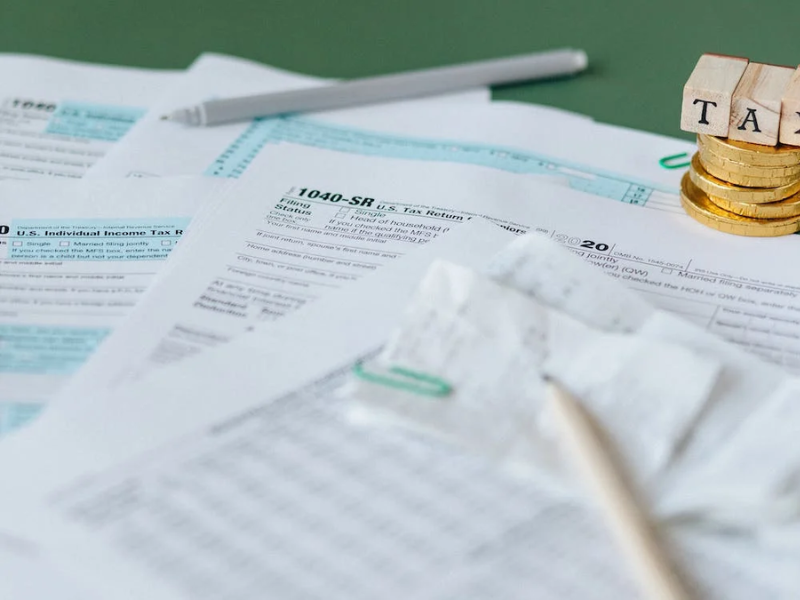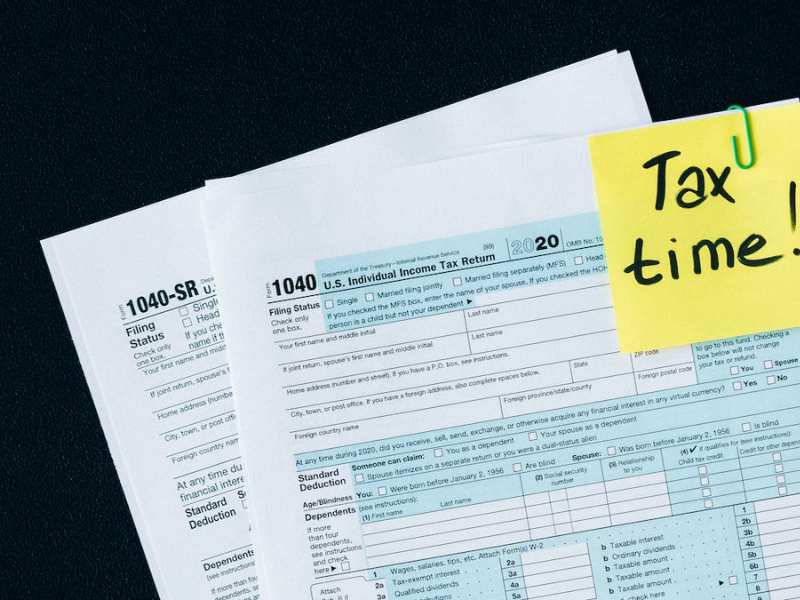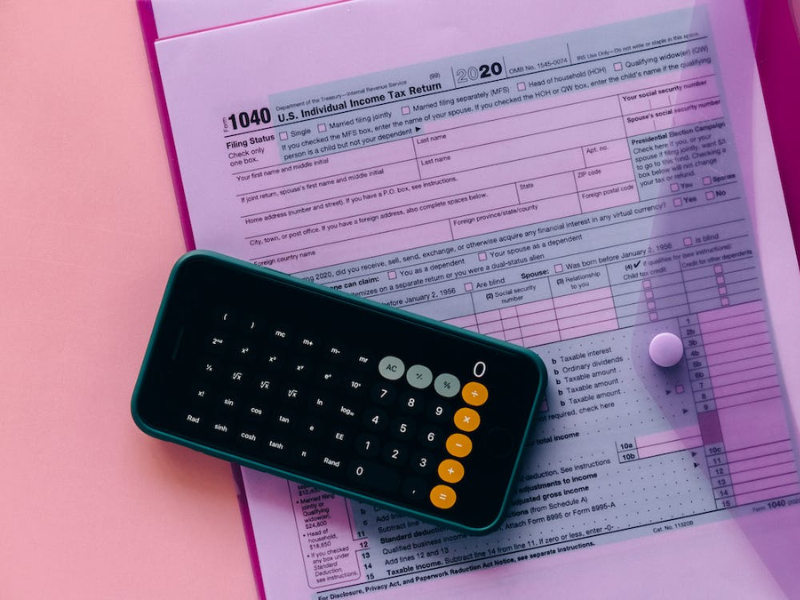Demystifying the Tax Lien Withdrawal Process: What You Need to Know
Imagine you owe back taxes to the Internal Revenue Service (IRS), and they’ve placed a lien on your real business or personal property elsewhere. That can be disheartening to any business owner looking to stake a claim in their industry. But this might be your first time hearing about a tax lien. So what is it?

Tax liens can cause chaos on your financial well-being. They can tank your credit score, making it challenging to secure loans or mortgages. But don’t fret, there is a way out of this burden: the lien withdrawal process!
In this article, we’ll explain what is a tax lien, when, and how to incur it. But before we dive into the nitty-gritty of lien withdrawal, let’s quickly understand what a lien is and how it can affect you.
Disclaimer: The information provided in this article is for general informational purposes only and should not be considered professional advice. Please consult a qualified tax professional or financial advisor for personalized guidance regarding your tax situation.
Defining the Concept: What is a Tax Lien?
A tax lien is the government’s legal claim on your assets, including real property owners’ estate, vehicles, or financial assets, as collateral for unpaid tax debts. It guarantees the payment of the outstanding tax debt, ensuring that the government can recoup what is owed to them.
If one fails to pay after the lien attaches and the obligation remains unpaid, the government can seize your assets through a tax levy. It serves as a warning sign to potential other creditors that the government’s interest on your unpaid property taxes now has priority over your assets.
A lien on specific property can seriously affect your financial standing. It can affect your credit rating, make it challenging to secure loans or credit, and even hinder property transactions. Understanding the implications of a lien is crucial in protecting your financial interests.
You may also like: Navigating Tax Relief: Understanding Its Importance, Eligibility, and Implications
What’s a Tax Lien Withdrawal and Why Is It Important?
A tax lien withdrawal essentially removes the lien, allowing you to regain control over your assets and financial freedom. The withdrawal releases the lien and signals that you have taken the necessary steps to resolve your tax debt.
This can be a significant positive point on your credit history, helping you restore your financial reputation and open doors to future opportunities. Moreover, the withdrawal process allows you to negotiate with your former bank account, accounts the government and other creditors to explore repayment plans that suit your financial situation.
The Tax Lien Withdrawal Process: A Step-by-Step Guide
According to statistics from the Tax Foundation, 157.5 million taxpayers filed their tax returns in 2020. This means Americans are being more responsible for their state obligations. With the help of the right tax professionals, tax lien certificates, and a legal claim, understanding unpaid property and the back taxes you owed can be a piece of cake.
In this section, let’s examine the process of achieving a lien withdrawal.
Preparing for Tax Lien Withdrawal
Before starting the withdrawal process, there are certain conditions you must meet. Firstly, you must be up-to-date with your tax filings, and all outstanding returns must be submitted. Additionally, you should have paid your current taxes or set up a payment plan with the IRS. Once you meet these prerequisites, you can proceed to apply for withdrawal.
Gathering the necessary documents is another vital aspect of preparation. You must complete Form 12277, the Application for Withdrawal of Filed Form 668(Y), Notice of Federal Tax Lien. This form will be your key to initiating the withdrawal process, so make sure you fill it out accurately.
Applying for Tax Lien Withdrawal
Now comes the crucial part: applying for the lien withdrawal. The full federal tax lien and certificate process primarily involves submitting the completed Form 12277 to the IRS. You must file it with the same office where the Notice of Federal Tax Lien was initially filed. Double-check the address and contact information to ensure a smooth application process.
After submitting the form, the IRS will evaluate your request and review your financial situation. Before deciding, they will consider your payment history, current tax compliance, and other relevant factors. It’s crucial to provide accurate and complete information to increase the likelihood of approval.
You may also like: IRS Offer in Compromise: A Comprehensive Guide to Settle Your Tax Debts
After Application: What to Expect and Next Steps
Now, the waiting game begins. The IRS typically takes some time to process the application and respond to your request. Be patient during this period and refrain from making any drastic financial decisions.
Once the IRS responds, you’ll receive information on the status of your application. There are three possible outcomes:
- Approved: Congratulations! Your application for tax lien withdrawal has been accepted. The lien is officially removed from property taxes, and you can enjoy the freedom from the lien, tax bill, and its burden. Please be aware of your future taxes so there will be no need for a lien withdrawal.
- Denied: Don’t lose hope if your application is denied. The IRS will provide reasons for the denial, and you can take corrective actions to reapply. Ensure everything is clean and smooth the next time you apply for faster processing.
- Partial Withdrawal: Sometimes, the IRS might grant a partial withdrawal, meaning the lien is released from specific assets, but the tax liability remains on others. This situation requires careful assessment and planning.
If your application is approved, keep a copy of the withdrawal notice for your records. It’s a significant document that can impact your financial future.
You may also like: Tax Relief Programs: Your Essential Guide to Financial Reprieve
Conclusion
Navigating the tax lien withdrawal process may seem challenging, but taking action and understanding the implications is essential. Following the steps outlined in this guide, you can work toward resolving the taxes owed and your lien and regaining control over your assets, business, personal property, and financial future.
Remember, tax lien withdrawal is an opportunity to negotiate with the IRS and demonstrate your commitment to resolving your tax debt. Stay informed, be patient, and seek professional help if necessary. With determination and perseverance, you can successfully understand the lien withdrawal process and secure a brighter financial outlook.
Frequently Asked Questions (FAQs)
Can I negotiate with the IRS to create a suitable payment plan for tax lien withdrawal?
Absolutely! The IRS is open to negotiations, and you can work with them to establish a payment plan that fits your financial situation. Communicating honestly and transparently is crucial to finding the best solution for both parties.
How long does the withdrawal process usually take?
The processing time for lien withdrawal can vary depending on your case’s complexity and the IRS’s workload. It’s best to be patient and avoid unnecessary stress during this period.
Is it possible to apply for tax lien withdrawal online?
The IRS does not offer an online application process for federal lien for withdrawal. You will need to submit Form 12277 physically to the IRS office where the Notice of Federal Lien was filed.
What happens if my application for withdrawal is denied?
If the IRS denies your tax lien certificate application, they will provide you with public notice of the reasons for the denial. After making the necessary corrections, you can address the issues raised and reapply for withdrawal.
Can I seek professional assistance for the withdrawal process?
Seeking professional help from a tax attorney or tax advisor can be beneficial. They can guide you through the process, ensure accurate documentation, and increase your chances of successful tax lien withdrawal.




